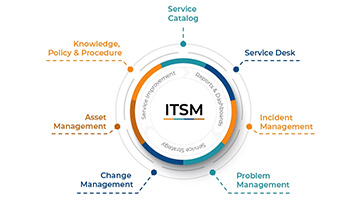IT Asset Management (ITAM) is a vital element of IT Service Management (ITSM) that focuses on the efficient oversight of IT assets throughout their entire lifecycle. From acquisition to disposal, ITAM manages hardware, software, and network resources to optimize usage, control costs, and ensure compliance with business goals and standards. This comprehensive approach includes inventory management, procurement, deployment, maintenance, and retirement, all aimed at aligning IT assets with organizational objectives and regulatory requirements.
Key Features
- Comprehensive Inventory: Maintains a detailed record of all IT assets, including model numbers, locations, and ownership.
- Lifecycle Management: Manages assets from acquisition through disposal.
- Cost Tracking: Controls costs associated with IT assets.
- Compliance Monitoring: Ensures adherence to regulations and licensing agreements.
- Automated Alerts: Notifies you of warranty expirations, maintenance, and renewals.
- Reporting and Analytics: Provides insights into asset performance and costs.
- ITSM Integration: Connects with other ITSM processes for seamless service delivery.
Benefits
- Cost Efficiency: Optimizes asset use and extends asset life.
- Enhanced Control: Improves visibility and alignment with organizational goals.
- Regulatory Compliance: Ensures compliance with licensing and regulations.
- Improved Decision Making: Facilitates data-driven decisions on assets.
- Reduced Downtime: Minimizes disruptions through timely maintenance and replacements.
- Streamlined Operations: Automates processes and integrates with ITSM functions.
- Risk Mitigation: Secures assets and reduces compliance risks.
